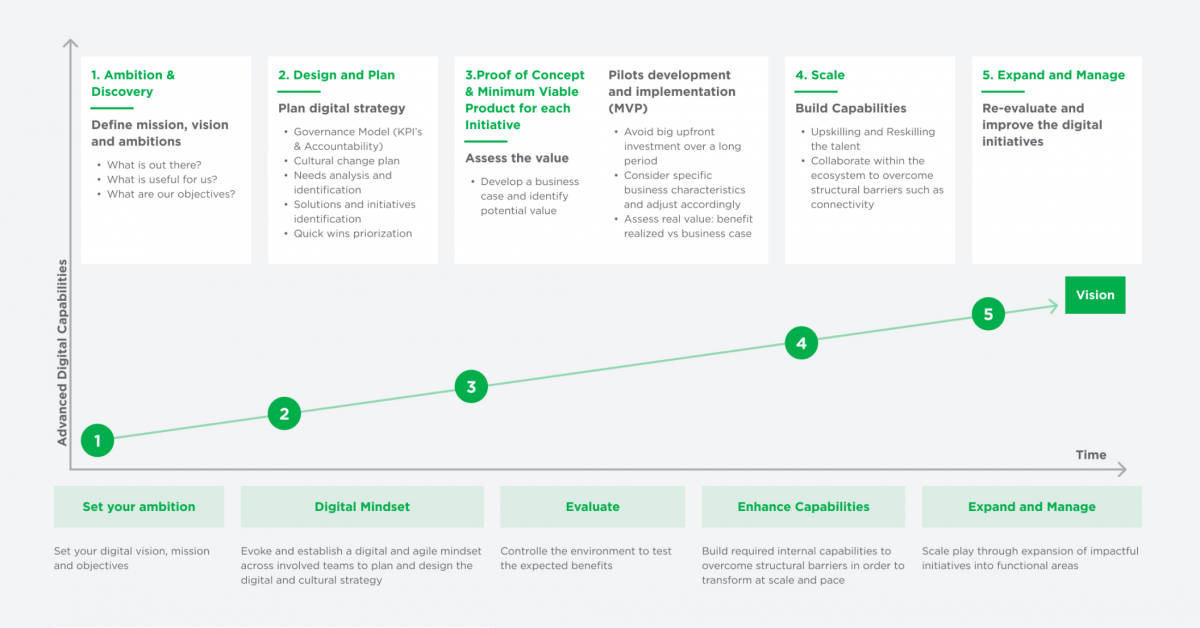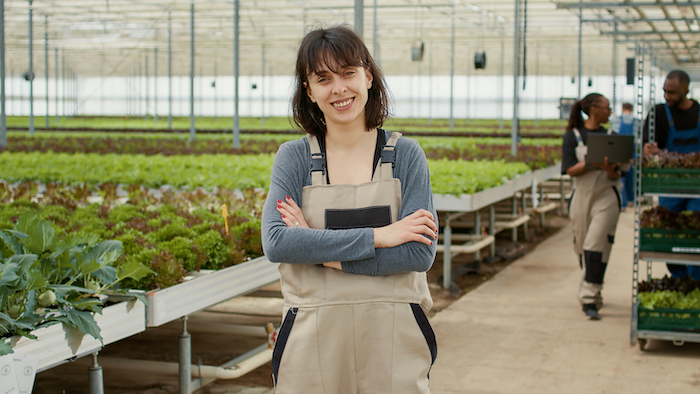Both questions stand out as important to the competitiveness of the agribusiness in order for Guatemala to remain the fifth largest exporter of sugar worldwide, the second largest in Latin America and the third with the highest productivity in the world.
Together with its innovation center, Innovahub, the association set out to find digital solutions for these guarantees in sugarcane cultivation.
Innovahub developed a platform that would address these goals in a simple way: it would track the logistics of agricultural products with "Digital Twins" sensors, GPS positioning systems, connectivity, analytical models and integrated logistics software for decision making. In addition, they developed a dashboard with tools, graphs and templates that allow comparative analysis and trends to anticipate events that may affect crops.
The results were more than favorable for the industry and the consumer. Among the main results of the logistics platform were:
- Optimized routes from the field to the customer's warehouse.
- Improved fuel efficiency
- Reduced delivery times for final products and raw materials.
- Guaranteed traceability throughout the chain.
- Reduced water consumption
- Reduced fertilizer use without affecting yields
- Optimization of the overall cost of production
Today, agribusiness organizations are facing pressures such as productivity demands, agricultural input prices, sustainability, food safety, adequate labor conditions and climate change. So how can companies design a Digital Transformation roadmap in Latin America and the Caribbean to address these different pressures?
There is no need to imagine extraordinary technological solutions to example this digital transformation in agribusiness. It is enough to recall that until before the Digital Transformation, companies and organizations needed several workers to prepare a field for planting. However, with the help of automated tractors on autopilot, this process requires limited workforce intervention.
This change in turn offers learning and retraining programs for the workers, as well as better working conditions, which are often physically demanding.
The example of the digital transformation plan of the sugar association in Guatemala is not the only one highlighted in the region.
Digital transformation in agribusiness
Machinery
An unexpected failure of an important machine in the operation can cause it to come to a standstill. This could lead to problems such as the loss of products in the company or failure to meet agreed delivery deadlines, which translates into large economic losses.
Organizations and SMEs implementing digitalization can use predictive tools, giving information about the condition of machinery and indicating the need for early preventive maintenance.
Preventive maintenance also increases the lifetime of a machine and reduces the need for unexpected capital investments by enabling organizations to foresee these situations and take prompt action.
Predictive analytics
The Agroclimate website developed by the Florida Climate Center in conjunction with the Center for Ocean-Atmospheric Prediction Studies (COAPS) uses historical and forecast climate data and crop simulation models so that companies and agribusinesses can compare results under different weather conditions and prepare for different scenarios.
The Australian government's Australian Agricultural Forecasting System is a tool designed to provide forecasts for Australia's agricultural markets, which can be used to plan which crops might be most profitable throughout the year based on value, volume and expected price.
A berry farmer in Peru used digital technologies to coordinate and determine lead times between processes to ensure that his products reached the freezer containers from the harvest fields in the shortest possible time and preserve the quality of the fruit.
A Chinese agritech called Pinduodo developed a platform to enable agribusiness companies to plan the best logistics route by reducing unnecessary traffic and optimizing the cold chain process.
The platform has helped garlic producers in China reduce travel with 16.1% less distance, 38.1% less fuel usage per ton, and reduce food loss and waste by 25%.
How to start the digital transformation for my agribusiness SME?
Some SMEs in Latin America and the Caribbean are inspired to experiment with technologies such as drones, precision agriculture or smart machinery for sustainable development.
It is important to emphasize that the Digital Transformation plan is a continuous and iterative process, where the results must be analyzed, evaluated and improved according to the particular ambition and capabilities of each organization.
Questions such as "what is important to our SME and our customers?", "what are industry leaders doing?", "where do we want to go with Digital Transformation?", "what is the best digital approach for us?", "what new capabilities and skills do we need to develop or acquire?" and "what is a reasonable roadmap to create value and deliver results?", should be asked repeatedly.
The five main recommended steps are:

Experience has shown that 85% of digital transformation implementation processes fail due to inadequate management in the organizational change culture, so it is crucial that the organization communicates effectively with its people, reassuring them and highlighting why the change is underway.
The study Digital Transformation of Agribusiness in Latin America and the Caribbean developed by IDB Invest in collaboration with Accenture can be consulted free of charge.
It also includes the use of tools of interest such as Thrive platform, a community of more than 5,000 startups from 100 countries that creates access for organizations to solve the biggest challenges facing the food and agriculture industry.
The research includes more examples of digital transformation in the region for agribusiness, analysis of it today and steps to start the strategy.



Follow Us